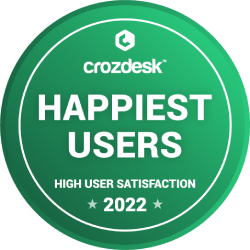4 Recruiting Strategies to Win Good Talent

With the current crisis hastening digital transformation and revolutionizing the landscape of work, recruiting talent is harder than ever before. The skills that were in demand before have now evolved into the very lifelines that sustain businesses.
This reality makes it necessary for HR teams to find ways to improve recruitment strategies and adapt to these new and challenging times.
The challenges HR teams will face this year
Recruiting is expected to be a top concern for HR teams this year — and rightly so. Following the massive shift to remote working, most recruitment processes these days will have to move into the digital space. This could potentially compromise the delivery and maintenance of the positive candidate experience, and, at the same time, raise the difficulty of fostering trust and genuine connection with potential employees.
In addition to this, problems associated with skill gaps and talent shortages are also bound to be amplified this year. This is because the crisis has made certain roles across industries even more difficult to fill. For instance, due to the pandemic and the strain it has put on the current healthcare system, health professionals are in demand. More tech experts, such as software developers, security professionals, and cloud architects, are also needed to bolster the world’s rapid digital transformation. Financial managers, one of the most popular career paths for students taking business administration degrees, will also be coveted, as businesses look to bounce back from a rough 2020. Financial managers combine long-term strategy with hands-on data analysis, which makes them one of the most crucial and hard-to-find pieces of the puzzle for many businesses.
In the face of these challenges, the pressure for HR teams to subscribe to the right strategies that can successfully win top talent is greater than it has ever been.
Recruiting strategies to apply this year
Utilizing the right channels
Now that the unemployment rate is high, posting job opportunities on popular job-hunting platforms can lead to an influx of applications that do not meet your set qualifications. To keep this from happening, what you can do is to source in smaller online communities and tap the right organizations. For instance, if you want fresh graduates, it would be in your best interest to contact local universities or colleges.
Reassessing employee benefits and incentives
With the ongoing health crisis altering people's priorities, the benefits employees want are also changing. Candidates today expect employers to offer comprehensive healthcare plans and provide opportunities for continued learning. They also presume that businesses care about their financial well-being and will introduce initiatives that can help them pay up student loans and make better financial decisions. If you want to be more appealing to in-demand talent, you have to recognize their changing needs and aptly meet them.
Leveraging a variety of technologies
One of the things that repel good candidates is a slow and long hiring process. If you want to be able to screen more candidates, you would have to use a variety of technologies that can shorten your hiring cycle. Think recruiting software and innovations like AI and machine learning. These advancements can be leveraged to speed up the process of scanning resumes, matching candidates with job openings, and screening candidates for unsuitable behavior, among others. In some cases, they can also be used to promote transparency and improve candidate engagement.
Offering flexible working conditions
Since remote working is turning out to be the very legacy the pandemic will leave behind, it only makes sense for applicants to expect organizations to offer flexible working conditions. To make your organization the better option for job seekers in the long-term, you need to be able to offer at least some flexibility to meet this need.
the best candidates faster



the best candidates faster




